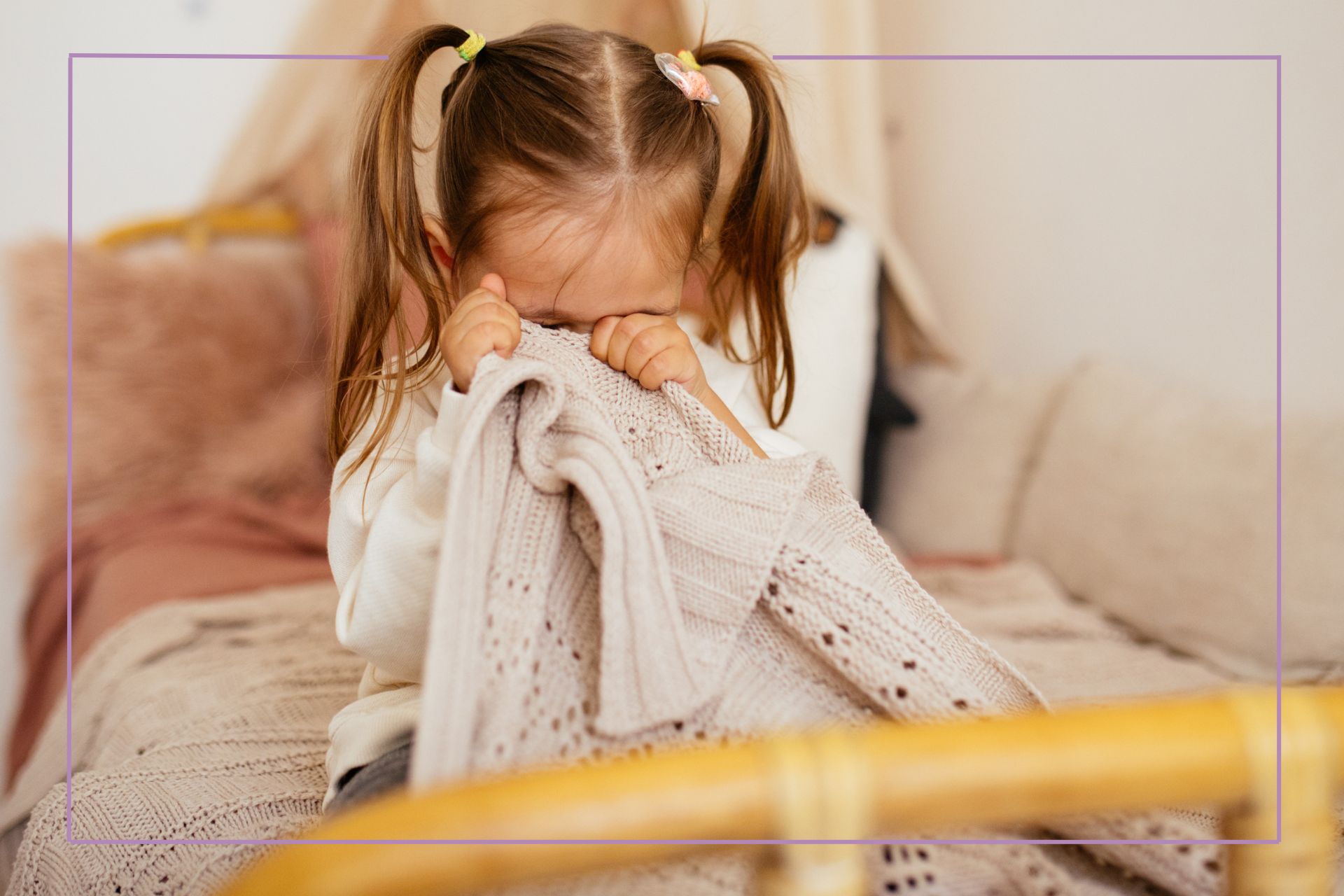
Children of the 80s were probably raised to blindly comply with adults; what they said went. You gave your aunty a kiss hello, and your nan a hug goodbye, even if everything in your body screamed 'no, I don't want to!' through fear of being rude, or at least that's what your parents worried about.
Here's the thing, when a kid doesn't want to do something a lot of adults can tend to take it personally when really it's not about them. Not wanting to hug doesn't mean they don't love their nan it means they just don't want hugs right now, and it should be their body, their choice.
Many parents want to keep their kids safe and part of that 'keeping safe' is teaching their kids that; 'their body, their choice'. The problem comes when these messages are confused because suddenly we - their adult - are overriding this and demanding they hug their nan so she - the adult - doesn't get offended. It isn't very clear and it's a lot to put on a kid to understand and be okay with.
Teaching children body autonomy is so important and way more beneficial when taught in the formative years, so 2-6 years old. A child needs to believe and know that their 'no' is important and should be heard, it's not rude. In this article, I share my knowledge and advice as a child and educational psychologist on how we, as adults can help advocate for our children and make their 'no' stand up to any adult, even grandma.
Why is it important that kids don't do anything they don't want to
To keep them safe and help them find their fit in society. One of the main ways to thrive in society and social situations - such as learning to make friends - involves understanding and respecting social boundaries. Social boundaries are a set of rules that are identified as the norm and followed by most people in a given society.
From the age of 15 months, children begin to develop the 'theory of the mind', which is the capacity to understand that other people's minds, feelings, and thoughts are different to their own. As soon as children begin to develop the 'theory of the mind', they must be explicitly taught that they have body autonomy. They can have physical and personal boundaries. Additionally, children aged 15 months (this may vary depending on their developmental ability) may begin to understand boundaries such as physical space and touch that are comfortable and not during social interaction with others.
Setting healthy boundaries is a two-way process that children need to recognise to learn about their limits and see the importance of respecting others. To give them autonomy, children deserve respect when they say 'No', particularly when associated with their bodies.

For example, respecting a child's decision when they choose not to have physical contact, such as giving a family member a hug, kiss or touch, is crucial, and it is helpful not to force them to do so. In turn, children will develop healthy boundaries, identify their limits, be confident, and stand up for themselves, when necessary, which are social skills that allow them to thrive in the community, school, and family. When children are taught that their body autonomy and personal boundaries matter, they are likely to have the skills to know when to feel responsible for other people's dilemmas and when not to, which positively has an impact on their emotional well-being.
Equally, as children develop, they must be encouraged to develop intellectual boundaries. Intellectual boundaries refer to being comfortable forming independent opinions and thoughts that help us navigate our stance on a particular issue. This is particularly helpful when children become teenagers and may be influenced to engage in unsafe behaviours that may put them at risk.
Emotional boundaries can be encouraged in children by allowing them to separate and respect that other people's needs and wants can be different. This prevents them from passing unwarranted blame on others for their own emotions. For example, children can be taught that they may experience anger sometimes if others do not want close contact, and they do, which is a normal feeling, and others should not be blamed for having such feelings. Instead, they need to reflect on what led to such feelings.
The 5 things kids never have to do
- Hug or kiss family members (sorry, nan!)
- Be happy all the time
- Stay silent and still
- Blindly comply without question
- Express gratitude in the way you want them to
A recent 2020 study by Michielsen and Brockschmidt argued that all children have participation rights, although they may be seen as too young to make decisions. They highlighted that children have the right to consent and access age-appropriate information that can keep them safe. For example, learning how to use their voice (verbally or non-verbally) when they feel their privacy is not respected. Nelson and Pettersson (2019) found that there is a significant of young people aged 16-20 with hearing difficulties who do not have a sense of body autonomy, understand their right to participation and have an adequate amount of information such as sex education to keep them safe as teaching is not often adapted to their needs. Therefore, ensuring that the information is digestible and appropriate to meet children's needs is essential.
My top tips for teaching social, physical and emotional boundaries
Set a good example. Review your personal boundaries and do an honest assessment of whether you tend to please others or respect your own boundaries. Children tend to copy what parents do, not just what they say.
Model empathy. This is a powerful tool for parents and caregivers. Children can understand when others are hurt and show concern by age three; this is an excellent opportunity for parents to engage in role-play and model empathy. When parents notice children showing empathy in real situations, praise them and encourage such behaviours to continue. If children do not show empathy, consider exploring the function of that behaviour and whether there is an unmet need. Then, demonstrate empathy by explaining how one can show concern for others and respect their wishes. Visual aids, such as comic strip conversations or social stories, can be helpful in this process.
Practice setting boundaries. This is an effective way to teach children about personal space and respect. For younger children, teaching songs that involve the explicit teaching of setting boundaries can be helpful. For example, respect when children do not want to give a hug to a family member or sit on their lap while reading a story. Running through different scenarios about when it is okay to say no to a family member or friend can also be beneficial. It is important to emphasise that a simple 'no' is more than sufficient in most cases without further explanations. Encourage children to return to their safe space and to adults whom they have a positive relationship with if they feel their boundaries have not been respected.
Always talk. While practising how to say no, follow up with discussions about how to react when on the receiving end of one. Understanding the situation's opposite viewpoint can give your child some much-needed insight. They will learn that another person's 'No' deserves to be respected, which, in turn, can give them confidence in the validity of their own 'No.'
Embrace diversity by encouraging children to interact with others who are different but share a common interest. This will allow them to widen their network of friends and appreciate others despite their differences.
For a lot of parenting just understanding your kids developmental stages will help to make sense of their reactions or lack of, sometimes learning how to start a conversation about mental health with your kids, to talking about puberty can help too. Plus, did you know that watching Disney movies can be good for your child's emotional development?







